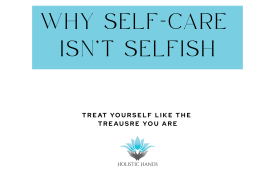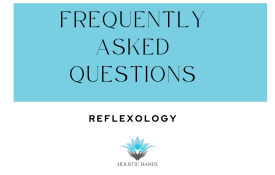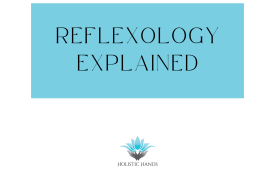Categories
-
0 "Why Self-Care Isn’t Selfish: Treat Yourself Like the Treasure You Are!"
- Reflexology
- by Claire Lewis
- 24-06-2025
0.00 of 0 votesIn our fast-paced world, it’s all too easy to neglect the one person who deserves our care and attention the most – ourselves! If you're like many of my clients, you may find it difficult to carve out time for self-care amidst the hustle and bustle of daily life. But here's the truth: self-care isn't just a luxury; it's a necessity! In this blog post, we'll explore why self-care is so important, the common barriers that prevent us from indulging in it, and how you can start treating yourself with the love and care you truly deserve. Understanding Self-Care Self-care refers to the intentional actions you take to care for your physical, mental, and emotional well-being. It’s about recognising that you deserve to feel good, both inside and out. Whether it’s enjoying a soothing massage, indulging in a calming aromatherapy session, or simply taking time to relax, self-care helps recharge our batteries and enhances our overall quality of life. Common Struggles with Self-Care Guilt: Many people feel guilty about taking time for themselves. You may think, “I should be working” or “I don’t deserve this.” Here’s a secret: by prioritising your well-being, you’ll be better equipped to serve others, whether at work, home, or in your relationships. Remember, you can’t pour from an empty cup! Busy Schedules: Life is hectic, and it can feel impossible to fit self-care into your calendar. The key is to make it a non-negotiable part of your routine. Even small moments of self-care can make a significant impact. Lack of Awareness: Sometimes, we simply forget to prioritise ourselves. It’s easy to get lost in the daily grind. Setting reminders or scheduling self-care days can help bring awareness back to your needs. Misconceptions About Self-Care: Some people believe self-care has to be extravagant or time-consuming. In reality, self-care can be as simple as taking a few minutes to breathe deeply, enjoying a warm cup of tea, or indulging in a good book. The Benefits of Self-Care Investing time in self-care has numerous benefits that can transform your life: Improved Mental Health: Engaging in self-care can help reduce stress, anxiety, and depression. It allows you to reconnect with your emotions and cultivate a more positive mindset. Enhanced Physical Health: Regular self-care practices, such as massage and reflexology, can alleviate physical tension, improve circulation, and boost your immune system. Increased Productivity: Taking breaks to care for yourself can actually increase your productivity. You’ll return to your tasks with renewed energy and focus. Better Relationships: When you prioritise your well-being, you’re more present and engaged in your relationships. You’ll find you have more love and energy to give to others. Practical Self-Care Tips Schedule It In: Treat self-care as an important appointment. Block out time on your calendar dedicated solely to activities that nourish your soul. Start Small: If you’re new to self-care, start with small, manageable actions. Try dedicating 10 minutes a day for a relaxing ritual or practice mindfulness. Explore Your Options: Self-care is not one-size-fits-all. Experiment with different activities to see what resonates with you. Whether it’s a warm bath, a nature walk, or a session of aromatherapy, find what brings you joy. Create a Self-Care Kit: Compile a collection of items that help you relax and unwind. This could include essential oils, a cosy blanket, herbal teas, or your favourite book. Having these items on hand can make it easier to engage in self-care. Connect with Professionals: Don’t hesitate to reach out to professionals, such as massage therapists or reflexologists. They can provide you with valuable self-care experiences that you might not be able to replicate at home. Conclusion: Embrace Your Worth It’s time to stop viewing self-care as a luxury and start recognising it as an essential part of your life. You are worthy of love, relaxation, and rejuvenation. By prioritising self-care, you’ll not only improve your own well-being but also enhance your ability to support those around you. So, why not take a moment right now to reflect on how you can integrate self-care into your daily routine? Remember, you deserve it! Now that you’re aware of the importance of self-care, what are you waiting for? Treat yourself like the treasure you are and watch how it transforms your life!
-
- Reflexology
- by Claire Lewis
- 26-04-2025
0.00 of 0 votesWhat is reflexology? Reflexology is a therapeutic practice that involves applying pressure to specific points on the feet, hands, face or ears, which correspond to different organs and systems in the body, promoting relaxation and healing. What are the benefits of reflexology? Benefits may include reduced stress and anxiety, improved circulation, relief from headaches, enhanced relaxation, and support for overall wellness. How does reflexology work? Reflexology is based on the principle that stimulating specific reflex points can help to balance and restore the body’s natural energy flow, potentially alleviating stress and pain. Is reflexology painful? Reflexology should not be painful. While some areas may be sensitive, the pressure applied is generally comfortable and should result in relaxation rather than discomfort. How long does a reflexology session last? A typical reflexology session lasts between 30 to 60 minutes, depending on the practitioner and the individual’s needs. How often should I have reflexology treatments? The frequency of treatments can vary based on individual health goals, but many clients benefit from regular sessions, such as weekly or bi-weekly. Can anyone receive reflexology? Most people can benefit from reflexology; however, it may not be suitable for individuals with certain medical conditions, such as severe foot injuries or infections. Always consult a healthcare provider before starting any new therapy. What should I expect during a reflexology session? During a session, you’ll typically recline comfortably while the practitioner applies pressure to your reflex points. You may experience relaxation and a sense of well-being. Do I need to prepare for a reflexology session? It’s advisable to wear comfortable clothing and avoid heavy meals before your session. Drinking water afterwards can also help with detoxification. Is reflexology a replacement for medical treatment? Reflexology should complement, not replace, conventional medical treatment. It is important to consult healthcare professionals for any medical conditions. Some of the most common misconceptions about reflexology therapy: Reflexology is just foot massage: Many people believe reflexology only involves foot massage. In reality, it can also be performed on the hands and ears, targeting specific reflex points related to different body systems. It’s only for relaxation: While reflexology promotes relaxation, it is also used to address various health issues, such as pain management, stress reduction, and improving circulation. Reflexology is painful: Some people think that reflexology must involve pain to be effective. However, it should be a comfortable experience, and pressure can be adjusted according to individual comfort levels. It can replace medical treatment: Reflexology is often misunderstood as a substitute for medical care. While it can complement traditional medicine, it should not replace consultations with healthcare providers for serious conditions. Reflexology is a quick fix: Many believe that one session will resolve all issues. In reality, consistent treatments over time are often necessary to achieve lasting benefits. Reflexology is only for certain people: Some think reflexology is only for those in pain or with specific health conditions. However, it can benefit anyone looking to enhance their overall well-being. Reflexology has no scientific basis: While some remain sceptical, various studies support the benefits of reflexology in reducing stress and promoting relaxation, though more research is needed in some areas. You need to undress for reflexology: Unlike some therapies, reflexology typically requires minimal undressing. Clients can remain fully clothed, especially for hand, face or ear reflexology. Reflexology is not safe for everyone: While generally safe, individuals with certain medical conditions, such as severe foot injuries or infections, should consult a healthcare professional before receiving reflexology
-
- Reflexology
- by Claire Lewis
- 21-04-2025
0.00 of 0 votesThe History of Reflexology: An Ancient Healing Practice Reflexology is a complementary therapy that has steadily gained popularity in the UK and beyond for its holistic approach to health and well-being. This practice involves applying pressure to specific points on the feet, hands, and ears, which correspond to various organs and systems in the body. To appreciate reflexology’s significance today, it is essential to explore its rich history and evolution over the centuries. Ancient Origins Earliest Evidence The roots of reflexology can be traced back to ancient civilisations. Evidence of similar practices dates back to around 2330 B.C. in ancient Egypt, where hieroglyphics were discovered depicting foot and hand treatments. These images suggest that the Egyptians recognised the therapeutic benefits of stimulating specific points on the body to promote healing. Traditional Chinese Medicine Around the same time, ancient Chinese medicine was developing theories about energy flow throughout the body. The concept of "Qi" (or "Chi") describes the life force that circulates through meridians, or energy pathways. Reflexology aligns with this philosophy, as it aims to restore balance and harmony within the body by manipulating pressure points. Development Through the Ages Indian Influence In India, the practice of reflexology can be linked to Ayurvedic medicine, which emphasises the balance of body, mind, and spirit. The ancient Indian healing system recognised the importance of foot massages and their potential benefits for both physical and mental health. The Renaissance and Beyond During the Renaissance in Europe, there was a renewed interest in ancient medical practices, including those of the Egyptians and Chinese. This period saw the emergence of touch therapies, and reflexology began to take shape as a distinct practice. In the early 20th century, Dr. William Fitzgerald, an American physician, developed the concept of "zone therapy," which laid the groundwork for modern reflexology. He proposed that the body could be divided into ten vertical zones, and applying pressure to specific areas would influence corresponding body parts. The Birth of Modern Reflexology Eunice Ingham’s Contribution The modern reflexology movement owes much to Eunice Ingham, a physiotherapist who studied Fitzgerald's work. In the 1930s, Ingham published the influential book "Stories the Feet Can Tell," which detailed her findings on reflex points and their connection to various body systems. Her work helped popularise reflexology, leading to its recognition as a legitimate therapeutic practice. Zone Therapy Zone therapy and reflexology are often intertwined, as both practices share a foundational principle: the belief in the presence of specific zones or areas on the body that correspond to different organs and systems. Zone therapy, an early 20th-century practice, posits that the body is divided into ten vertical zones, each linked to specific parts and functions. Reflexology builds upon this concept, focusing primarily on applying pressure to specific points on the feet, hands, and ears, which are believed to correspond to these zones and thereby influence the body's health. This connection between the two therapies is rooted in the idea that stimulating these reflex points can promote healing and balance within the body's various systems. By targeting these zones, practitioners of reflexology aim to alleviate stress, enhance circulation, and support the body's natural healing processes. The synergy between zone therapy and reflexology offers a holistic approach to wellness, tapping into the body's inherent ability to heal and maintain equilibrium. Global Recognition In the following decades, reflexology gained traction across the globe and was embraced by practitioners in Europe, North America, and Asia. It adapted to various cultural contexts while retaining its core principles. Today, reflexology is utilised in spas, wellness centres, and healthcare settings, often as a complementary therapy alongside conventional medicine. Reflexology Today In recent years, reflexology has garnered significant interest from researchers and healthcare professionals. Numerous studies have investigated its potential benefits, including stress reduction, pain relief, and improved circulation. While more research is needed to fully understand its efficacy, many individuals report positive outcomes and enhanced well-being from reflexology sessions. Professional Organisations and Training As demand for reflexology has grown, so have opportunities for formal education and training. Professional organisations in the UK, such as the Association of Reflexologists (AoR) and the Complementary and Natural Healthcare Council (CNHC), have established standards for practice and certification. These organisations promote ethical practices and ensure that practitioners are well-trained in the art and science of reflexology. Conclusion Reflexology is more than just a foot massage; it is a time-honoured practice with deep historical roots. From its ancient origins in Egypt and China to its modern-day applications, reflexology continues to evolve while remaining true to its fundamental principles. As this holistic therapy gains recognition within the wellness community, it offers a gentle yet powerful means of promoting health and balance in our lives.
GIVE YOURSELF A MOMENT OF RELAXATION
BOOK YOUR SESSION NOW!
Address
Holistic Hands, 17 Conway Road,
Taplow, Maidenhead,
Berkshire SL6 0LB






